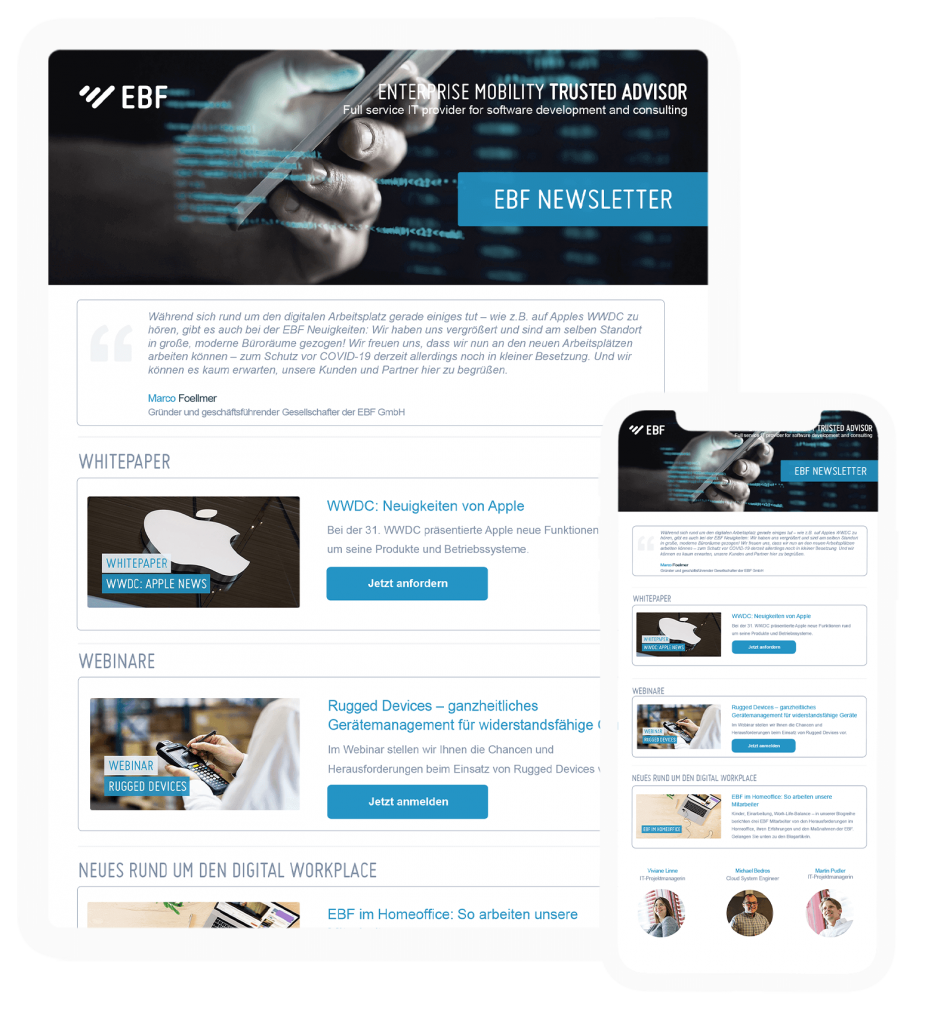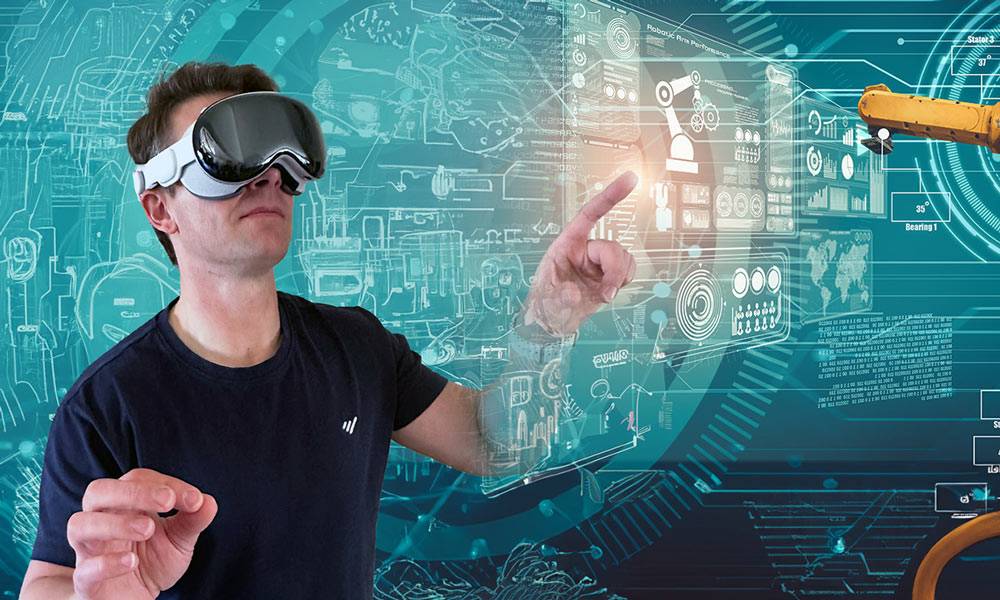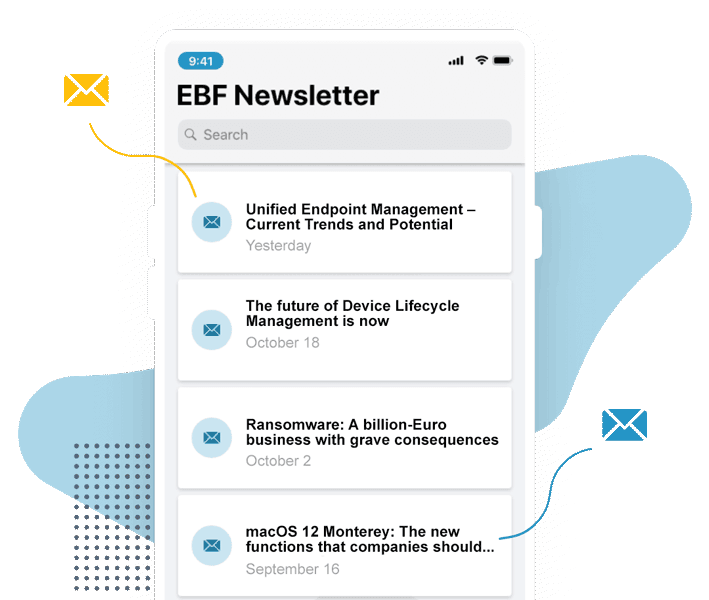In our review of the year, we summarize key developments in the Digital Workplace and Enterprise Mobility sector in 2019 and explain what has kept companies busy this year. We show what new opportunities unified endpoint management has brought with it, what new approaches there are to IT security and device management. We also explain what changes this year’s releases of iOS 13 and Android Q have brought about and how they should be used.
1. 1. Mobile First was yesterday - Realizing complete management of end devices in companies
A conceptual transformation makes it clear how device management has changed in companies: First there was talk of Mobile Device Management (MDM), then Enterprise Mobility Management (EMM), and in 2019 the industry increasingly talked about Unified Endpoint Management (UEM).
The background to this development is that the boundaries of the workplace of the future will become increasingly blurred and processes will be executed across devices. As a result, companies no longer want to manage only mobile devices and their content and applications via a central platform, but rather all the company’s end devices – from mobile devices to desktop PCs, from iOS and Android to macOS and Windows. The unified endpoint management approach enables both ease of use and a high-quality user experience for end users and significantly simplified management for IT administrators.
2. Zero Password, Full Security - Usability and security must be guaranteed
IT security was a central challenge for companies of all sizes in 2019 and will continue to be so in the years to come: IT departments should meet the increased need for protection of sensitive (company) data, but also meet the high expectations of end users for ease of use – with easy-to-use passwords. However, passwords alone are no longer sufficient to protect data due to current technological developments. Two-factor authentication (2FA) is considered to be significantly more secure, in which two independent components are queried for login. Cyber-attacks remain unsuccessful if an attacker lacks the second component for authentication. Two-factor authentication is already widely used by companies to strengthen their IT security.
However, developments in this area now go even further: towards “Zero Password”. This expresses a striving for a passwordless future. At the same time, the concept of “Zero Trust” assumes that no user, device or application service can be trusted inside or outside of one’s own network, so that every interaction must be checked. The concept represents a paradigm and culture change for IT departments.
Companies that want to implement both principles in their structures are facing significant change processes.
Both concepts solve problems that have been one of the biggest challenges for IT departments for years. For example, companies have long wanted to enable employees to work without a password, but at the same time ensure that sensitive data is secure by querying the device identity – or otherwise respond with appropriate measures.
The implementation of both concepts is now possible and leads to a significant increase in user acceptance of services and services.
3. Device Lifecycle Management: Integrated platforms open up new opportunities
In 2019, companies usually have very heterogeneous device and system landscapes. At the same time, business relationships exist with a large number of providers who provide services for these devices. This presents companies with enormous challenges and causes a high level of administrative effort. The distribution of employees across different locations and the increasing internationalization of companies make it even more difficult for the departments involved to maintain an overview.
This is exactly where Device Lifecycle Management solutions come in, enabling companies to manage all products and services from different manufacturers and service providers via a central platform. Interfaces ensure that all systems can be integrated. In this way, all phases of a device can be mapped: from acquisition to use, administration and maintenance to disposal or replacement.
4. Using product releases effectively
Releases of operating systems often result in changes in the work processes of IT departments, simplify things or create new opportunities or increase IT security and employee satisfaction.
This year, Apple’s iOS 13 introduced user enrollment for BYOD devices, providing companies with greater privacy for their employees’ personal devices. For example, IT administrators under iOS13 can no longer view and manage user-installed apps on the device or delete private files stored on the device.
Android on the other hand, with the introduction of Android Q, has further restricted device management via the device administrator, making the switch to Android Enterprise even more urgent. Android Enterprise offers a much better device management option for IT departments. Employees can now work with Android devices even more efficiently and securely.
Mastering new challenges with the EBF
In addition to these four central developments, other factors may have been important for your company. We will be happy to advise you which solution is the right one for your individual requirements and help you to classify market developments from the perspective of your specific industry challenge and to derive necessary measures. 2020 will also bring many new challenges. Let us take them on together!












